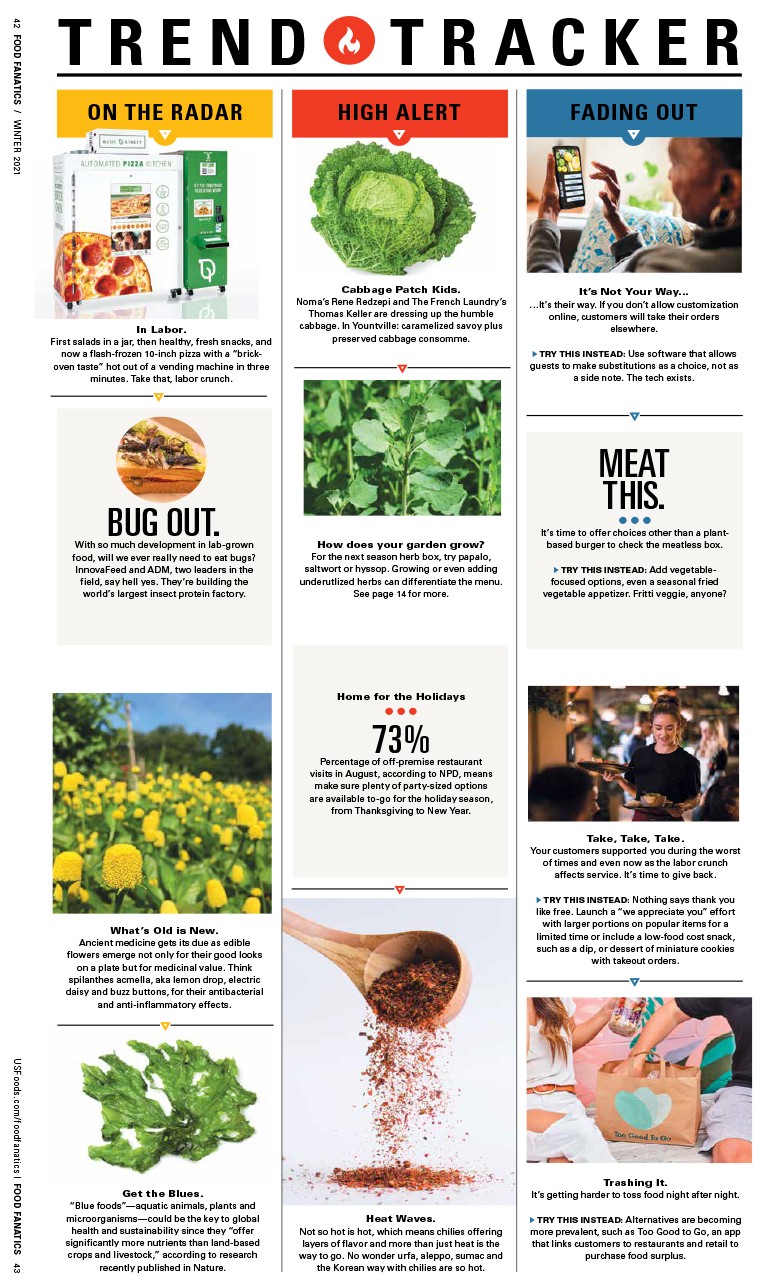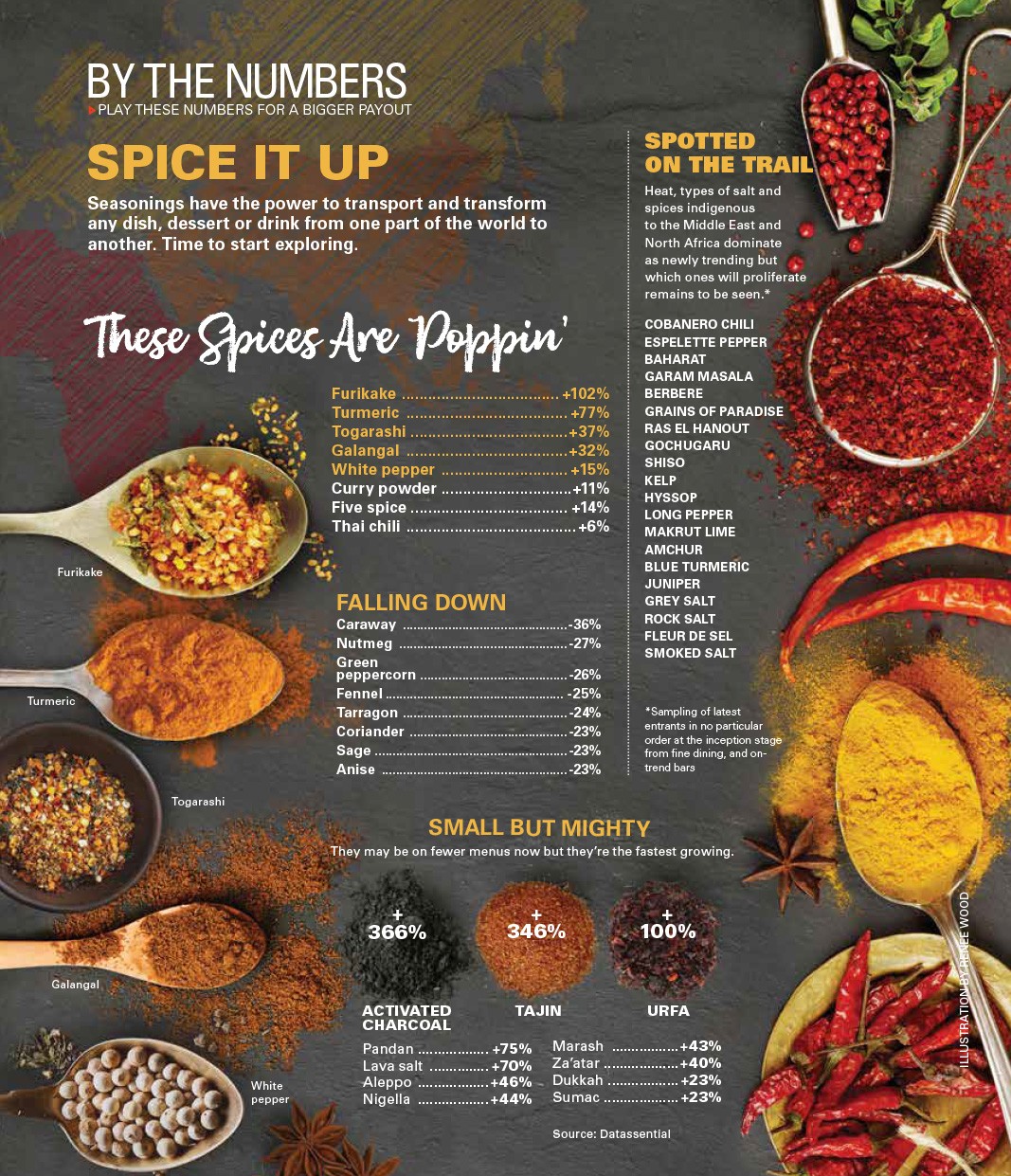EXPLORING NATURAL WINE AND ITS INCREASING POPULARITY
The word "natural" gets slapped onto everything from eggs and dairy to soft drinks and ice cream, so it's no surprise the term has been growing on wine lists around the world.
Unlike conventional wines, natural winemakers adhere to non-interventionist production methods that eschew chemicals, sulfites or filtering, so that the inherent characteristics of the grapes truly shine. For fermentation nerds who were early adopters of sour beers or shrubs, this could be the next beverage moneymaker. According to a 2015 report from Nielsen, 65% of wine drinkers aged 21 to 34 expressed interest in natural wines.
A stateside boom has prompted the arrival of specialty natural wine bars like Four Horsemen in Brooklyn, New York; Terroir in San Francisco; and cameos at concepts like the Italian restaurant Alimento in Los Angeles or the cross-cultural Entente in Chicago. So why is natural wine suddenly so hot in the states? When you think about the back-to-nature philosophy that has popularized grass-fed proteins and local produce at farmers’ markets, it’s not a far stretch.
“Some people just want to drink something that hasn’t been tainted,” says Caleb Ganzer, managing partner at Compagnie des Vins Surnaturels in New York City and founder of Vknow, a wine education app. “Natural wine is that movement in a nutshell.”
WHAT IS NATURAL WINE?
Just because a wine is labeled “natural” doesn’t guarantee consistency and quality. It remains a nuanced term, requiring careful vetting of trustworthy producers and distributors. But there are a handful of common traits you can count on.
“Everybody has their own definition for what that means,” Ganzer says. “I have five tenets: I don’t think you can call it (natural) without organic or biodynamic farming, hand-harvesting, indigenous yeast, no additives to the actual juice and very low sulfur.”
Stemming from a long-ingrained farmhouse winemaking tradition in southwest France that dates to the turn of the 20th Century, natural wine became a full-fledged movement in the late 80's, largely due to French pioneer Jules Chauvet, a renowned winemaker and taster with a background in chemistry.
Today, natural wine is being produced in regions throughout Europe and as far afield as Australia, Africa and South America, as well as by a handful of emerging domestic producers. These wines tend to yield wild, earthy and brambly flavors, thanks to the unfiltered live yeasts inside the bottle, which boast a funk not dissimilar from another trending beverage: kombucha.
“Typically, they have a stronger ‘yeasty’ element. They also tend to have lifted fruit profiles and a pleasant funk that balances that out,” says beverage director Matthew Dulle of two-Michelin-starred Lazy Bear in San Francisco. “They evolve from the first sip to the last. The most interesting element of wine is that it is a living, evolving thing.”
To preserve the taste of wine, conventional winemakers use sulfites, and have for centuries. The process of making natural wine rarely includes sulfites–and when it does, the amount is negligible. It is believed by those who love natural wine that sulfites have a tendency to mute the flavor of the final wine, while traditional winemakers believe it preserves it.
NATURAL WINE VS. ORGANIC WINE VS. CONVENTIONAL WINE
To put it succinctly, natural wine is made without intervention. That means there is no manipulation of the vines, no pesticides or unnatural fertilizer. Very little or no additives are used once the grapes are harvested and the winemaking process begins. Yeast in natural wines is created organically, a result of the fermentation process.
Conventional wines contain dozens of legal additives allowing winemakers to manipulate the entire wine drinking experience, from flavor and aroma, to texture and acidity. Conventional wines are also filtered, giving them a clear, clean appearance, while natural wines can appear cloudy. Yeast is often added to conventional wines, speeding up the fermentation process and allowing them to hit market shelves sooner.
Organic wine, on the other hand, is made without synthetic fertilizers, toxic pesticides and herbicides, and is made without the use of any genetically modified organisms (GMOs). The grapes in conventional wine can often be GMO grapes, as well as the yeast. In order for a wine to be certified organic, it can’t contain anything that has been genetically modified.
Do Your Homework
Diving into small-production natural wines does demand extra research, as a lot can go wrong – even if you source from an established producer.
Yields can change annually; poorly packed imports can damage the quality en route; and once on site, active yeast in the bottle makes proper storage even more important. “You can’t leave it out at room temperature,” Ganzer says. “You wouldn’t want to keep fruit on your counter, so you should refrigerate it.”
Ganzer admits entry-level natural wine can be more expensive than generic labels, but not prohibitively so. “You can still find great bottles around $10, so they’re not by any means out of reach,” he says.
Regular tastings with a trusted distributor and staff education are key to ensure the product lives up to your standards. Lindsay Martinik, sommelier at Mabel Gray in Hazel Park, Michigan, says getting feedback from industry friends is key. “Buy a few bottles and test them with the staff, chef and cooks. Take a bottle home and eat different things with it. Ask your distributors to bring you samples, or make sure your rep tells you when a representative from certain wineries or winemakers is coming into town,” she says.
Closing the Deal
Despite all the unfamiliar terminology, weaning customers onto natural wine doesn’t have to be a hard sell. At Mabel Gray, Martinik finds that natural wines from cooler climates pair well with the spicy, pickled and fermented dishes found in Chef James Rigato’s tasting menus.
“I find that once people try these wines, they are more interested in them and may then seek them out,” she says. “I tend to do it as a by-the-glass special or use them on the tasting menu, and then maybe on a guest’s second visit, they will buy a bottle.” Dulle of Lazy Bear also slides it onto the pairing menu and offers it by the glass, but doesn’t specifically call it out to customers.
“The most important standard that must be met is that the wine is good. If that stipulation isn’t met, then I really don’t care about how it was made,” Dulle says.
SOMMELIER-APPROVED NATURAL WINES TO TRY
Sommelier-approved natural wines to check out.
JAUMA: South Australian producer, just outside of Adelaide, farming organically without sulfur and secondary fermentation in the bottle. A little cloudy, unclarified, funky and fun.
DOMAINE DE L’HORIZON: Small producer in French Catalonia, in Calce, working with indigenous grapes and minimal sulfur. Brambly and juicy, with fresh flavors that make great entry-level wines.
CASA CATERINA: Biodynamically-farmed and wild yeast-fermented grapes from Lombardy, Italy, with a focus on sparkling wine.
ERIC TEXIER: Minimalist winemaker from Brezeme in northern Rhone, in France, produces a unique portfolio that runs the gamut in terms of offerings.



